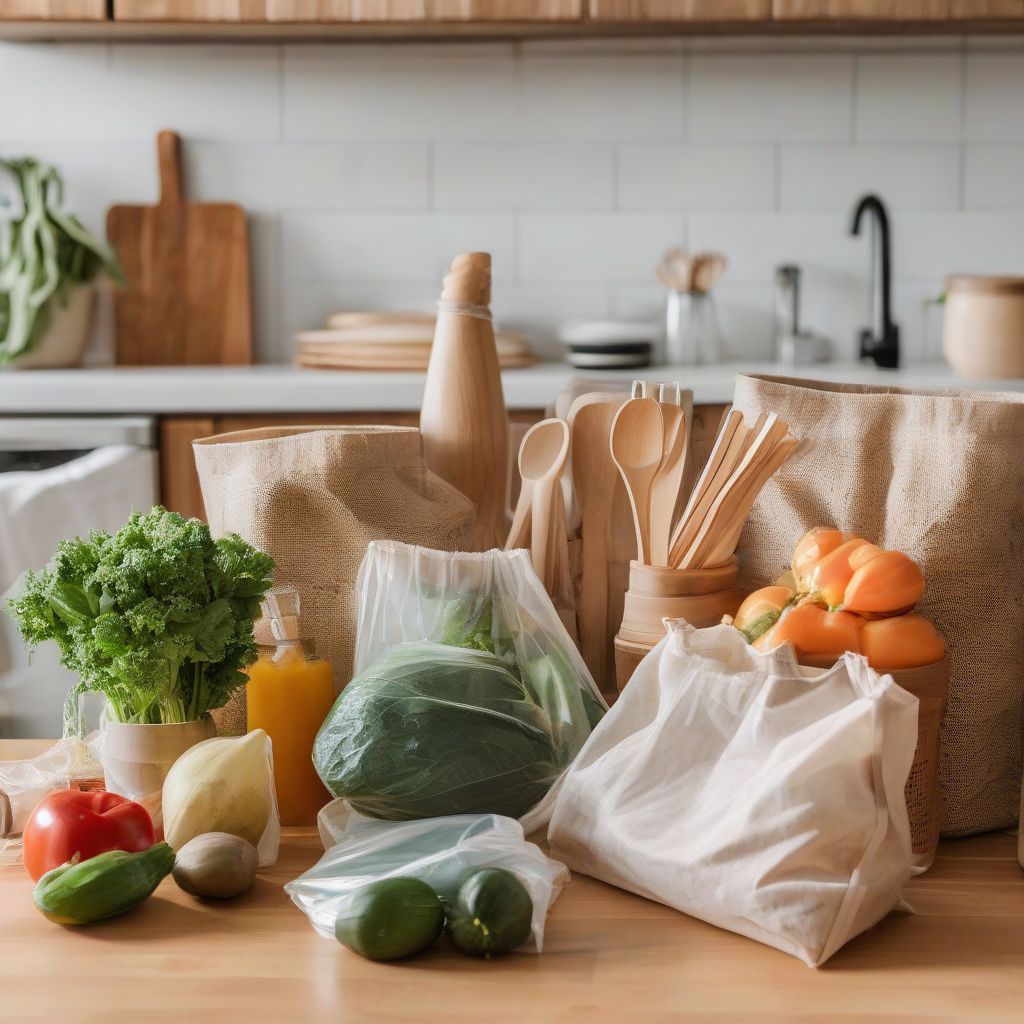Imagine a world where our oceans aren’t choked with plastic, landfills aren’t overflowing, and our bodies aren’t exposed to harmful chemicals. Switching to a plastic-free lifestyle might seem daunting, but with small, consistent changes, you can significantly reduce your plastic footprint and contribute to a healthier planet. This comprehensive guide provides practical steps and actionable tips to help you transition towards a plastic-free home.
Understanding the Plastic Problem
Before diving into solutions, it’s crucial to understand the magnitude of the plastic problem. Plastic pollution affects our environment, wildlife, and even our health. From the Great Pacific Garbage Patch to microplastics in our food chain, the evidence is overwhelming. As a nutritionist, I see the potential health implications of plastic exposure daily, and I believe a proactive approach towards reducing plastic use is vital.
Kitchen Conversions: Plastic-Free Food Storage and Preparation
The kitchen is often the biggest culprit when it comes to plastic waste. Here’s how to make sustainable swaps:
Food Storage
- Ditch the plastic wrap: Beeswax wraps, reusable silicone food covers, or glass containers are excellent alternatives for storing leftovers and keeping food fresh. These options are durable, washable, and eliminate the need for single-use plastic.
- Invest in reusable containers: Glass or stainless steel containers are perfect for storing dry goods, snacks, and leftovers. Opt for BPA-free options to ensure food safety.
- Say goodbye to plastic bags: Reusable silicone bags are perfect for freezing fruits, vegetables, and even prepped meals. They’re also great for on-the-go snacks.
Shopping Smart
- Bring your own bags: Keep reusable shopping bags in your car or purse so you’re always prepared.
- Choose package-free produce: Skip the pre-packaged fruits and vegetables and opt for loose options.
- Buy in bulk: When possible, buy items like grains, nuts, and dried fruits in bulk using your own containers. This reduces packaging waste and often saves money.
 Plastic-Free Kitchen Alternatives
Plastic-Free Kitchen Alternatives
Bathroom Bliss: Eliminating Plastic from Your Personal Care Routine
Our bathrooms are often filled with plastic bottles and packaging. Here’s how to create a more eco-friendly space:
Swapping Toiletries
- Shampoo and conditioner bars: Solid shampoo and conditioner bars are a fantastic way to eliminate plastic bottles. They last longer, are travel-friendly, and come in various formulations for different hair types.
- Soap without the plastic: Choose bar soap wrapped in paper or cardboard instead of liquid soap in plastic bottles.
- Bamboo toothbrushes: Switch from plastic to bamboo toothbrushes. They’re biodegradable and a sustainable alternative.
Sustainable Personal Care
- Reusable cotton rounds: Ditch disposable cotton rounds and opt for reusable, washable ones.
- Safety razors: Invest in a safety razor for a closer shave and less waste. The blades are recyclable, and the razor itself can last a lifetime.
- DIY personal care products: Explore making your own lotions, scrubs, and other personal care products using natural ingredients.
Cleaning Green: Eco-Friendly Cleaning Solutions
Cleaning supplies are another significant source of plastic waste. Here are some simple swaps:
Natural Cleaning Products
- Vinegar and baking soda: These pantry staples are powerful cleaning agents and can replace many commercial cleaners.
- Castile soap: This versatile soap can be used for various cleaning tasks, from dishes to laundry.
- Essential oils: Add a few drops of your favorite essential oils to create natural, fragrant cleaning solutions.
Sustainable Cleaning Tools
- Reusable cleaning cloths: Replace paper towels with reusable cloths made from microfiber or other sustainable materials.
- Wooden brushes and scrubbers: Choose wooden cleaning tools instead of plastic ones.
Beyond the Home: Making Sustainable Choices on the Go
Reducing plastic use extends beyond the confines of your home. Here are some tips for making eco-friendly choices on the go:
Reusable Essentials
- Reusable water bottle: Carry a reusable water bottle to stay hydrated and avoid buying plastic water bottles.
- Reusable coffee cup: Bring your own coffee cup to your favorite coffee shop.
- Reusable cutlery: Keep a set of reusable cutlery in your bag for meals on the go.
Conclusion
Switching to a plastic-free lifestyle is a journey, not a destination. Start small, focus on one area at a time, and celebrate your progress. Every little change you make contributes to a healthier planet and a healthier you. What small step will you take today to reduce your plastic footprint? Share your thoughts and ideas in the comments below!



